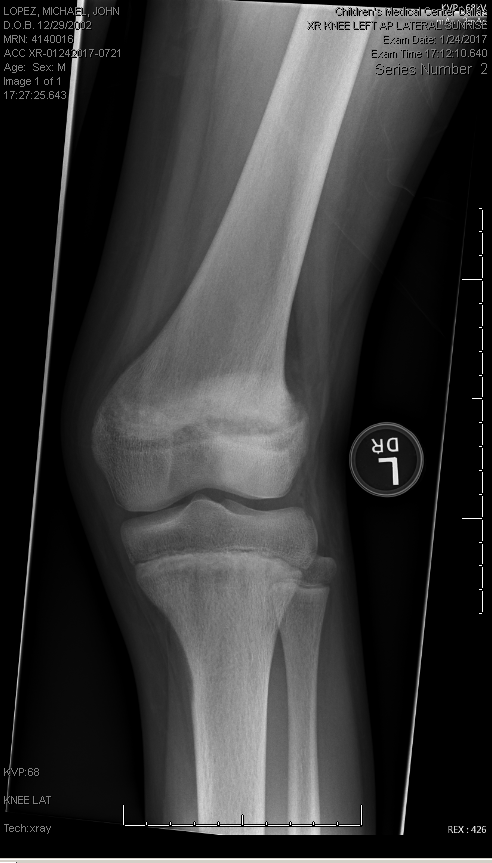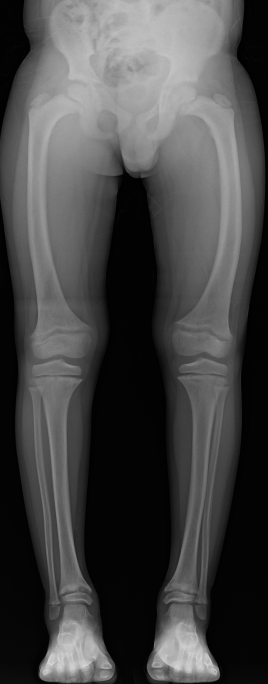Overview
Rickets is a disease in children caused by a lack of vitamins in the body. These vitamins are calcium, phosphorus, or Vitamin D. Rickets can cause bones to be weak or deformed. Over time, the bones become crooked and deformed. Crooked or bowed legs are a common finding in children with rickets. Although it is preventable, rickets is still seen in some parts of the world, including the United States. Rickets can also be inherited. This page discusses nutritional rickets only.
Risk factors
- Breast milk does not have enough Vitamin D for babies. Children who are only breastfed are at risk for rickets. Most pediatricians recommend Vitamin D drops for babies who are only fed breast milk.
- Children who do not get enough calcium or who otherwise have an unhealthy, unvaried diet can be at risk for rickets.
- Lactose intolerance may lead to rickets due to restricted intake of dairy products.
- Humans need sun exposure to make Vitamin D in our skin. Lack of sun exposure can cause a Vitamin D deficiency. People with dark skin may need more sun exposure to make enough Vitamin D.
Symptoms
Children with rickets may be sleepy or drowsy. They can have weak muscle tone. Seizures may occur. They may have slow or delayed growth and development. Bowed legs may develop, as well as deformities of the spine, chest, and ribs.
Examination & Evaluation
Your doctor will perform a thorough history and physical. If your doctor is worried about rickets, he or she will order other tests.
X-rays: X-rays show abnormalities of the growth plates (Figure 1), fractures, and bone deformities (Figure 2). They can also help to assess bone health.

Figure 1: Knee X-ray shows widening of the growth plate in a child with rickets

Figure 2: X-ray shows knock-knee deformity in the legs in a child with rickets.
Labs: Blood tests can measure the levels of Vitamin D, calcium, and phosphorus in the blood.
Treatment
Treatment usually begins with calcium and Vitamin D supplements. Your doctor may also recommend some dietary changes. Children with inherited rickets will usually be treated by an endocrinologist.
Prognosis
The prognosis for most children with rickets is good, once treatment has begun. Some of the bony deformities can correct over time. In some cases, surgery will be needed to correct deformities, such as severely bowed legs.
Prevention
Growing children need enough calcium and Vitamin D to be healthy. Vitamin D is often added to milk and other dairy products. Infants need 400 IU of Vitamin D per day up to age 1 year. Babies who are exclusively breast fed require a Vitamin D supplement. Older children require up to 600 IU per day.
Many foods such as dairy products and vegetables like kale contain calcium. Supplements may also be taken. Babies require 200-260 mg per day of calcium. Young children (1-3 years old) require 700 mg per day of calcium, children 4-8 years old require 1,000 mg per day, and adolescents require 1,300 mg per day.
More Information
Q. What is Rickets?
Rickets is a disease in children caused by a lack of certain vitamins—usually calcium, phosphorus, or Vitamin D. Rickets can cause the bones to be weak or deformed. Bowed legs are a common finding in children with rickets.
Q. Do we still have this in the United States?
Yes, there are still cases seen in the US today.
Q. Can rickets be genetic?
Yes, some forms of rickets are hereditary. These require treatment by a specialist, usually an endocrinologist.
Q. What are the risk factors for rickets?
Children who are fed only breast milk are at risk for rickets. Breast milk does not contain enough Vitamin D for babies.
Children who do not get enough calcium or who otherwise have a poor, unvaried diet can be at risk for rickets. Humans need sun exposure to make Vitamin D in our skin. Limited sun exposure can cause a Vitamin D deficiency. People with dark skin may need more sun exposure to make enough Vitamin D.
Q. How can I tell if my child has rickets?
Children with rickets may be sleepy or drowsy, and have weak muscle tone. They may have slow or delayed growth and development. You may see crooked legs or deformities of the spine, chest, and ribs.
Q. How does a doctor diagnose rickets?
In addition to a thorough history and physical, your doctor will order an X-ray and lab tests if he or she is worried about rickets.
Q. How is rickets treated?
Treatment usually begins with calcium and Vitamin D supplements. Your doctor may also recommend some dietary changes. Children with inherited rickets will usually be treated by an endocrinologist.
Q. Can children with rickets recover?
Most children with rickets do well once treatment has begun. Some of the bony deformities can correct over time. In some cases, surgery will be needed to correct deformities, such as severely bowed legs.
Q. How can rickets be prevented?
Is it essential for growing children to get enough calcium and Vitamin D. Infants need 400 IU of Vitamin D per day up to age 1; in babies who are exclusively breast fed this usually require a supplement. Older children require up to 600 IU per day. Often milk and other dairy products are supplemented with Vitamin D. Babies require 200-260 mg per day of calcium. Young children (1-3 years old) require 700 mg per day of calcium, children 4-8 years old require 1,000 mg per day, and adolescents require 1,300 mg per day. Many foods contain calcium (such as dairy products and vegetables like kale) but supplements may also be taken.

 POSNA.org
POSNA.org

